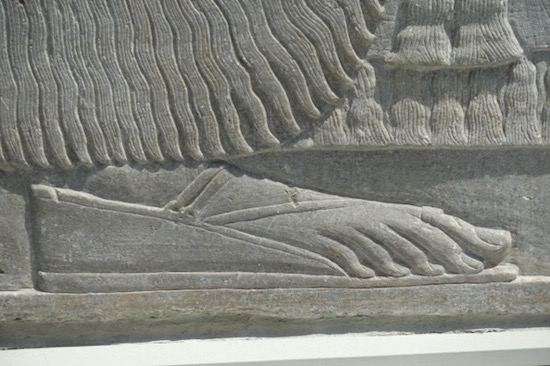 ---- U.S. Fish and Wildlife Service photo
---- U.S. Fish and Wildlife Service photo
By BILL BETTY for ecoRI News
Sue Morse is an expert in natural history and one of the top wildlife trackers in North America. A recent article about her caught my attention. She believes the northern counties in Vermont, New Hampshire, Maine and New York would be ideal places for migrating cougars to reoccupy. These areas have what pumas need to survive: prey, open space and cover.
Morse, the founder of Keeping Track, believes that South Dakota cougars will spread to Manitoba and then to Ontario. Their descendants will eventually reach New England.
Besides Ontario, it’s likely the origins of these recruits to New England will be from Quebec and the Maritime Provinces. Mountain lions have already been identified there. Ontario has them as well, and Morse’s Manitoba trekkers will only add to the number of free-ranging North American genotype cougars now found in the province. Since all North American subspecies are virtually indistinguishable, this will hardly make any difference in their genetic makeup. And we’ll still call them eastern cougars no matter what anyone says.
The Ontario Puma Foundation has estimated the number of mountain lions at 550. One has been shot, another captured and about 24 confirmations have been made. Nearly 500 pieces of evidence have been recovered. Despite this, obstructionists continue to issue denials, suggesting that all of these cougars are males — hence no natural reproduction.
Studies by Marc Gauthier and Anne-Sophie Bertrand during the past two decades have confirmed 19 mountain lions in New Brunswick and Quebec. Gauthier’s latest estimate of an existing population in Quebec is 10 to 100 pumas. Three mountain lions have been killed in Quebec, including a lactating female cougar that was hit by a truck near the New Hampshire border.
Advocates who favor restocking the Northeast by releasing Western cats into the region reject any suggestion that natural reproduction is taking place in the East because it undermines their raison d'être.
Five Nova Scotia events would be categorized as “class II” discoveries elsewhere, including the 1986 incident where the Bower family carried an unconscious cougar to the side of the road — similar incidents have happened in New England. Nova Scotia officials have classified this knockdown as “virtually certain.”
In addition, a number of provincial employees, including the head of the province’s Endangered Species Division, have reported sightings or found evidence.
In short, what we have sitting across the Canadian border is Montana is an enormous tract four times the size of Texas where mountain lions are present in sufficient numbers to persist. If pumas can drift down here from Ontario, they can just as easily wander into northern New England from Quebec, New Brunswick and Nova Scotia.
Many dispersers from eastern Canada will not go very far and will end up establishing home ranges nearby, but a few of these young cats will head south and trickle into New England. For a mountain lion, the Northeast is a hop, skip and a jump from New Brunswick, Quebec, Nova Scotia and Ontario, as opposed to the Black Hills, which are 1,800 miles away and a 22-month cat walk.
Morse and I hold similar views on this subject. Eastern Canadian migration is, in fact, what I have been suggesting for the past decade. She believes this dispersal of cougars to New England and New York may take as long as 30 years for a breeding population to return. Judging by the number of reports recorded and the evidence collected in the Northeast, it’s my view that this migration has been ongoing for decades. It’s possible that we already have a number of mountain lions in New England with ancestry from Quebec or nearby provinces. Others here may be from Michigan and other Midwest states.
Northern New York, New Hampshire, Maine and Vermont have brutal winters, deep snow and the lowest deer population in the Northeast. If Morse believes that these are ideal are conditions for puma, then what about Spencer, Mass., Pomfret, Conn., or Stanford, N.Y.? They all have relatively moderate weather, less snow, more deer and plenty of open space. These places also have farms, gardens and orchards. It’s where people have chosen to live, and now mountain lions are being seen there.
Maurice Hornocker, the dean of mountain lion researchers, has a simple theory that explains the urban cougar phenomenon. He believes “people attract deer” by providing food for them in the form of flowers, vegetables, fruits trees and the like, and the “deer in turn attract cougars.” Hornocker told me that he thought cougars would “start showing up in New England.”
Much of the evidence confirming lions has been discovered near settled areas. In 2011, a cougar was road killed on the Merritt Parkway, which runs through Connecticut’s Fairfield County. A million people live there. So do 30,000 deer. Pumas have been discovered in places such as Greenwich, Conn. Cougars of the Valley, a nonprofit based in Canton, Conn., has enlisted the help of local houndsmen to locate cougars using specially trained scat dogs.
Michael Keveny at Clark University analyzed potential sites for cougar reoccupation in Massachusetts and concluded that many parts of the state had adequate habitat for pumas to survive. Some like Cape Cod and Bristol County, Mass., he considered the “best.” Sport hunting zones around Boston have kill totals that are five times higher than those from the state’s three western counties.
In New York State, it’s much of the same story. John Laundre has identified the Adirondacks as a potential site for cougar reoccupation. He believes that the area could support as many as 390 pumas. Western New York could support a lot more. Deer kills in some southern and western New York counties, for example, are more than 10 times higher than in the Adirondacks. With a million whitetails, New York is a fertile hunting ground for apex predators.
Maine’s highest deer harvest was reported in the Midcoast region, where many of the state’s residents live. Deer kills in these five districts far exceed those from the interior. In fact, 100 northern townships had zero sport hunting kills last year. One person who presumably is watching all of this is Nathan Webb, a carnivore specialist and mountain lion expert with Maine’s Department of Inland Fisheries & Wildlife, who was recruited from Alberta, Canada.
If Burlington, Vt., and Lake Placid, N.Y., are ideal habitat for mountain lions in Morse’s opinion, then the towns and cities in New England and Atlantic Canada surely meet the definition of cougar heaven. There have been reported sightings of large cats in Rhode Island. The urban/woodland interface on the outskirts of coastal settlements have everything that mountain lions need to survive: numerous whitetails, small mammals, song birds and waterfowl; adequate edge habitat in the form of fields and clearings; and abundant patches of woods and brush that provide excellent cover.
Ontario dispersers will show up in New England or New York at some point if they haven’t already. It’s possible some of the recruits that establish home ranges in the Northeast will be migrators from Nova Scotia, Quebec or New Brunswick. A few that pass through northern New England will probably continue on to more hospitable places such as New Milford, Conn., or Rochester, Mass. Their arrival will not go unnoticed by other members of their species.
Alan Rabinowitz, CEO of Panthera, lives in Connecticut. He believes there is a small population in the region that is maintaining itself and breeding. He doesn’t accept the explanation that every cougar wandering the edges of suburbia is a former pet that managed to escape. If he’s right, then some local mountain lions must be border jumpers that found their way to southern New England from their natal ranges in eastern Canada by following rivers or hugging the coast.
We should celebrate the arrival of mountain lions in New England. Vermont has done so by putting the face of a catamount on its license plate. The Massachusetts Division of Fisheries & Wildlife has taken a step in the right direction by stating that “a large cat would be safeguarded under state statute — a welcome visitor, like any other indigenous animal (other than threat situations).”
Acknowledgement of mountain lions in their jurisdictions will be the next step for all of the New England wildlife agencies. I’m not optimistic that it will happen soon. Some states have sent officers to tracking schools in Wyoming or exchanged personnel with western states to learn firsthand about pumas. Others have circled the wagons. Money and manpower are issues.
The odds of this apex predator surviving and reproducing along the coast in Maine, Connecticut and Rhode Island or in the rolling hills in southern Vermont or New Hampshire are much better than in the hinterlands of New England. Abundant resources make these locations a predator’s paradise. And you don’t have to be one of the puma illuminati to figure this out.
Bill Betty is a Richmond, R.I., resident.











